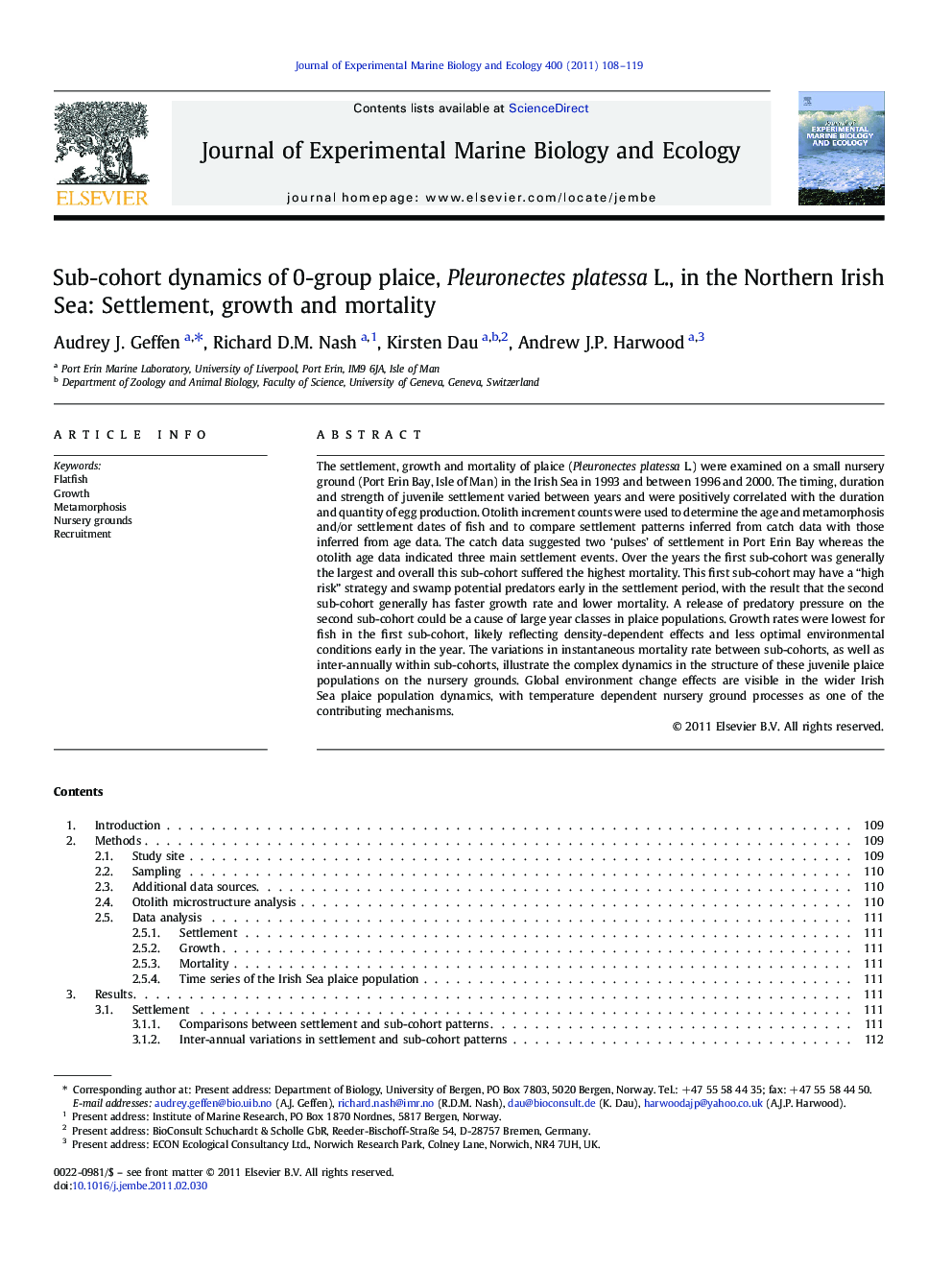| Article ID | Journal | Published Year | Pages | File Type |
|---|---|---|---|---|
| 4396340 | Journal of Experimental Marine Biology and Ecology | 2011 | 12 Pages |
The settlement, growth and mortality of plaice (Pleuronectes platessa L.) were examined on a small nursery ground (Port Erin Bay, Isle of Man) in the Irish Sea in 1993 and between 1996 and 2000. The timing, duration and strength of juvenile settlement varied between years and were positively correlated with the duration and quantity of egg production. Otolith increment counts were used to determine the age and metamorphosis and/or settlement dates of fish and to compare settlement patterns inferred from catch data with those inferred from age data. The catch data suggested two ‘pulses’ of settlement in Port Erin Bay whereas the otolith age data indicated three main settlement events. Over the years the first sub-cohort was generally the largest and overall this sub-cohort suffered the highest mortality. This first sub-cohort may have a “high risk” strategy and swamp potential predators early in the settlement period, with the result that the second sub-cohort generally has faster growth rate and lower mortality. A release of predatory pressure on the second sub-cohort could be a cause of large year classes in plaice populations. Growth rates were lowest for fish in the first sub-cohort, likely reflecting density-dependent effects and less optimal environmental conditions early in the year. The variations in instantaneous mortality rate between sub-cohorts, as well as inter-annually within sub-cohorts, illustrate the complex dynamics in the structure of these juvenile plaice populations on the nursery grounds. Global environment change effects are visible in the wider Irish Sea plaice population dynamics, with temperature dependent nursery ground processes as one of the contributing mechanisms.
Research Highlights► Dynamics of juvenile plaice settlement on a nursery ground between 1989 and 2003. ► Plaice subcohorts caused by pulses in settlement differ in growth and mortality rates. ► Early settlers more abundant but suffer higher mortality rates. ► Second cohort consistently had best growth and survival rates. ► Evidence of shifts in recruitment process reflecting temperature regimes and population size.
